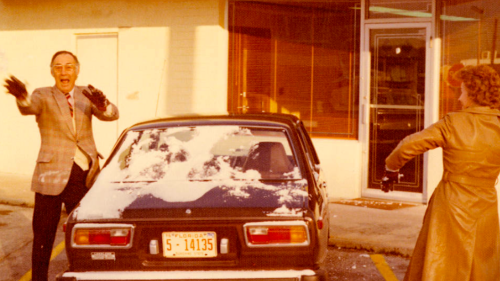Picture this: It was the mid-1900s. Dwight D. Eisenhower was president; “The Mickey Mouse Club” had made its debut on TV; + A gallon of gas cost around 23 cents. Oh, and one Florida man was turning a pile of rocks in the middle of the Homosassa River into a “Monkey Island” – with primates that were originally used to help perfect the polio vaccine.
The Spider Monkeys on Monkey Island | Photo by @kmikan_71
Though the original carload of vaccine-monkeys have passed away, you can still find their replacements on Monkey Island, which resides in the middle of the Homosassa River. Today, the troop consists of four local primates: Ebony, Emily, Eve, and Ralph.
The primates enjoy a lifestyle not unlike that of Lakeland: Their population is female-dominant (it’s 75% ladies on Monkey Island vs. 53% in Lakeland). They can often be found on a nearby beach (except when it’s too hot outside) + the island is a charming, one-of-a-kind destination, just like Swan City.
🐵 Why was the island built?
G.A. “Furgy” Furgason – a major development influencer in the 1960s – heard that a pile of rocks in the middle of Homosassa River kept causing boaters to crash. To alleviate this, Furgy had his workers pile some dirt around those rocks so the boaters would see them better. The workers got a little carried away with the task, and the result was a small, barren island. After a while, Furgy threw some trees + a lighthouse on the property to spruce it up a bit and went back to working on his main project around the corner – The Homosassa Wildlife State Park.
🐵 Why’d the monkeys come here in the first place?
The Spider Monkey colony originated from Dr. John N., a naturalist who brought them into the county after they’d been retired from fulfilling the needs of polio research. The monkeys were meant to live out their days at the Homosassa Wildlife State Park, but after too much monkey business occurred on the mainland (escaping, swiping candy from children, breaking into cars, and taking bites out of trusting hands with food), they were banished to their own “Monkey Alcatraz.”
🐵 Are the monkeys happy?
Though living on an island may seem a little dull, the primates’ habitat changes regularly with the movement of their buildings, play areas, and feeders. Additionally, visitors are a constant source of entertainment for the monkeys.
🐵 Who owns the island?
The Homosassa Riverside Resort. The resort cares for the monkeys, maintains the land, gives them fresh water, and feeds them with a menu that consists of green leafy vegetables, oranges, sweet potatoes, monkey chow, raw peanuts, and, of course, bananas. They are also regularly examined by a qualified primate veterinarian.
🐵 How can you visit Monkey Island?
Here’s the thing: The first rule of Monkey Island is that you can’t actually visit Monkey Island. This is an important rule to follow, for a few reasons:
- The monkeys prefer to enjoy a natural, undisrupted habitat.
- Humans are gross – a.k.a. they may be carrying diseases that could potentially be transmitted to the monkeys.
- Monkeys are wild animals – and although they may seem cute – they can pack a serious punch. (And getting attacked by a monkey isn’t a cool, scary story when said monkey weighs 15 lbs.)
🐵 So… is there any way to see them?
From the comfort of a sea-vessel, yes. If you’re going bananas over the idea of seeing Monkey Island in person, you can always boat or kayak to the area.
Monkeys can be seen from the Homosassa Riverside Resort (5297 S. Cherokee Way, Homosassa) or you can get closer by boating or kayaking over.
#ProTip: Make sure to swing by The Monkey Bar and Grill next door for some delish food + a history lesson on the island.
Quiz
See the correct answer in today’s newsletter.












